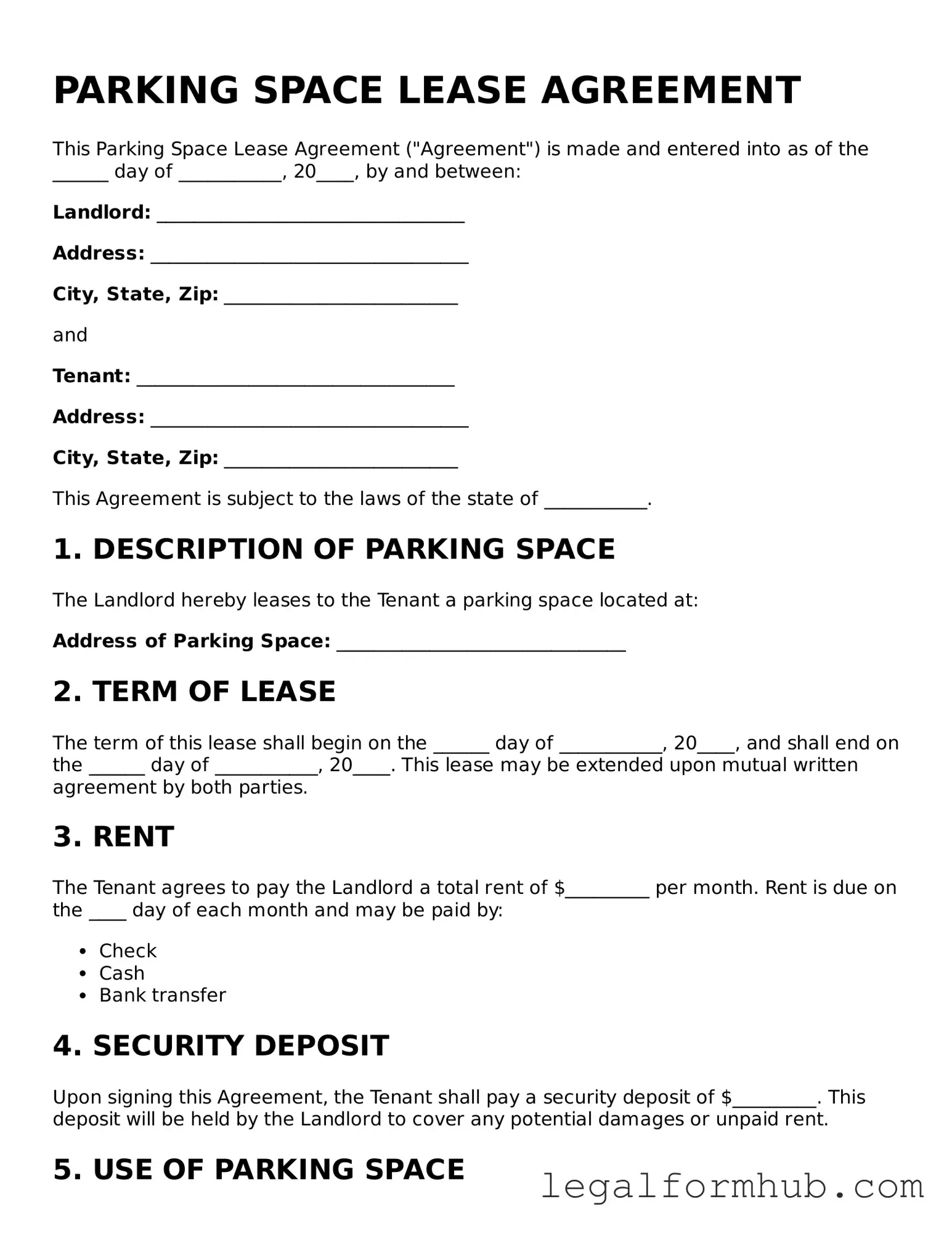The Rental Agreement is a document that outlines the terms and conditions between a landlord and a tenant for renting a residential property. Like the Parking Space Lease Agreement, it specifies the duration of the rental period, payment terms, and responsibilities of both parties. Both documents serve to protect the rights of the involved parties and ensure clarity regarding the use of the property, whether it be a home or a parking space.
The Commercial Lease Agreement is similar in nature to the Parking Space Lease Agreement but pertains to commercial properties. This document details the terms under which a business can occupy a space for commercial purposes. Both agreements include provisions on payment, duration, and maintenance responsibilities, ensuring that both the landlord and tenant understand their obligations and rights.
The Sublease Agreement is another document that shares similarities with the Parking Space Lease Agreement. It allows a tenant to rent out a space they are leasing to another party. Just as the Parking Space Lease Agreement outlines the specific terms for parking, a Sublease Agreement details the terms under which the original tenant can allow another individual to use the leased space, ensuring that all parties are aware of their rights and responsibilities.
The License Agreement is a document that grants permission to use a property for a specific purpose. Similar to the Parking Space Lease Agreement, it does not transfer ownership but allows for the use of the space under agreed-upon conditions. Both agreements clearly define the terms of use, duration, and payment, ensuring that the property owner and user have a mutual understanding of the arrangement.
When entering into any rental agreement, it's essential to understand the nuances of the contract being signed, whether it be a Residential Lease, a Sublease, or even a specialized agreement like a Storage Unit Lease. Each document, including those governing specific arrangements such as parking, informs both parties of their rights and responsibilities. To facilitate this process, make sure you utilize the appropriate forms to avoid any misunderstandings; for instance, you can access the Fill PDF Forms to ensure your lease agreements are completed correctly and effectively.
The Service Agreement can also be compared to the Parking Space Lease Agreement. While it typically outlines the terms of services provided between two parties, it can include provisions for the use of space for service-related activities. Both documents emphasize the importance of clear terms and conditions to avoid misunderstandings regarding the use of the space and the responsibilities of each party.
Finally, the Storage Unit Rental Agreement is similar in that it governs the rental of a specific space for storage purposes. Like the Parking Space Lease Agreement, it sets forth the rental terms, payment obligations, and responsibilities for maintenance. Both agreements serve to protect the interests of the property owner while providing a clear framework for the user regarding what is permitted within the rented space.
